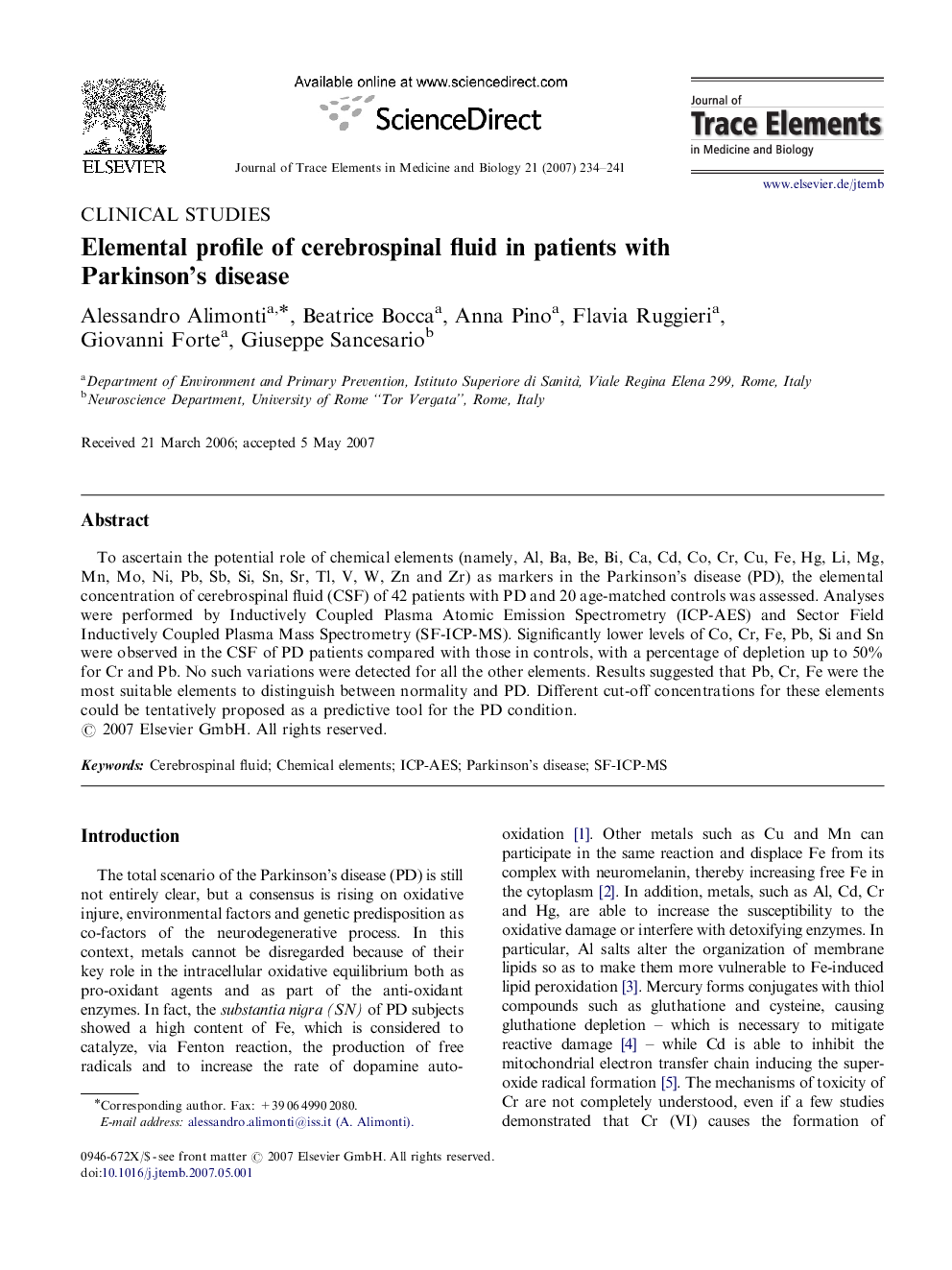| Article ID | Journal | Published Year | Pages | File Type |
|---|---|---|---|---|
| 1226867 | Journal of Trace Elements in Medicine and Biology | 2007 | 8 Pages |
Abstract
To ascertain the potential role of chemical elements (namely, Al, Ba, Be, Bi, Ca, Cd, Co, Cr, Cu, Fe, Hg, Li, Mg, Mn, Mo, Ni, Pb, Sb, Si, Sn, Sr, Tl, V, W, Zn and Zr) as markers in the Parkinson's disease (PD), the elemental concentration of cerebrospinal fluid (CSF) of 42 patients with PD and 20 age-matched controls was assessed. Analyses were performed by Inductively Coupled Plasma Atomic Emission Spectrometry (ICP-AES) and Sector Field Inductively Coupled Plasma Mass Spectrometry (SF-ICP-MS). Significantly lower levels of Co, Cr, Fe, Pb, Si and Sn were observed in the CSF of PD patients compared with those in controls, with a percentage of depletion up to 50% for Cr and Pb. No such variations were detected for all the other elements. Results suggested that Pb, Cr, Fe were the most suitable elements to distinguish between normality and PD. Different cut-off concentrations for these elements could be tentatively proposed as a predictive tool for the PD condition.
Related Topics
Physical Sciences and Engineering
Chemistry
Analytical Chemistry
Authors
Alessandro Alimonti, Beatrice Bocca, Anna Pino, Flavia Ruggieri, Giovanni Forte, Giuseppe Sancesario,
